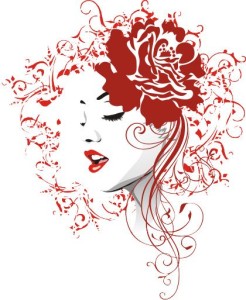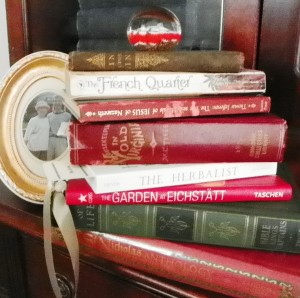Birthday’s are better when celebrated with sisters who understand “fabulous!”
Happy Birthday to my fabulous sister…Judy Pink…celebrating in fashion…will there be dancing with Cappuccino on a rooftop ?
Inquiring sisters want to know….
Birthday’s are better when celebrated with sisters who understand “fabulous!”
Happy Birthday to my fabulous sister…Judy Pink…celebrating in fashion…will there be dancing with Cappuccino on a rooftop ?
Inquiring sisters want to know….
 Good heart nutrition comes in more ways than eating the proper foods and conducting the proper movements….it is also that dose of energy that laughter brings, the release of a healing hug, the stress burner from a passionate kiss…and…it is knowing one has a special little shop where all things glamorous and good can be found.
Good heart nutrition comes in more ways than eating the proper foods and conducting the proper movements….it is also that dose of energy that laughter brings, the release of a healing hug, the stress burner from a passionate kiss…and…it is knowing one has a special little shop where all things glamorous and good can be found.
For my friends in the UK that is a quaint little shop at E7 Number 8 in Forest Gate. My good friend and extended family members Andie and Jeff are the proprietor’s-talented, fun, and always ready to help you find the perfect gift…for someone else or for self….
I bet you could even get a cup of tea while you shop 🙂
Enjoy and take care of the Heart…in all ways.
That is Bliss in action~
 I honored this for one day (wearing red) was informed today it is a month long event…now, while I won’t wear red everyday ( don’t have that many red outfits:) This blog revolves around Red and Bliss….so, we are good to go I believe.
I honored this for one day (wearing red) was informed today it is a month long event…now, while I won’t wear red everyday ( don’t have that many red outfits:) This blog revolves around Red and Bliss….so, we are good to go I believe.
St.Valentine’s Day is on the way and that too…works well with Red and Bliss…going to be a fabulous February my friends…yes it is !
There is no one size fits everybody with Heart-Health…so, do your homework, define your needs and make a plan.
One thing that does work for us all is healthy eating and good movement…that can and so often is…half the battle to being well. Oh…and laughter…really, really is a good thing ~ and hugs ~ don’t forget the hugs!
The photo is beautiful, inviting, and healthy…strawberries…sun-dried…no sugar added, naturally sweet and delicious. How is that for a heart-healthy- do ?
Namaste’
Bliss…can be something as simple as watching the sky turn red at the end of a day…or as profound as “knowing” yes…there is a higher power that rules that beautiful Red sky!
Namaste’
 Bliss comes in many different forms, through many different channels, and for many different reasons.
Bliss comes in many different forms, through many different channels, and for many different reasons.
If we are proud of our professions, accomplishments, our family, and our homes…we happily stand up and claim the accolades that are often bestowed upon us as being, at least in part, responsible for the results.
Should we not be just as proud, with a huge dose of thankfulness, for Jesus Christ, the one who listens, guides( if we listen) and forgives ( when we don’t.)
The journey is the focus, the destination will adjust accordingly .
As humans we will take many paths in search of the needs that come with being “human.”
Ask, and ye shall receive…understanding, acceptance, and forgiveness.
Not just once…but once a day, every day, for all our days.
Embrace the gift~

A few interesting facts about the color “Red.” It is not for the faint of heart…..Red equates to “bliss” in my world.
Red means “Beautiful” in Russian.
The word “ruby” comes from the Latin word rubens, meaning “red”.
The color red doesn’t really make bulls angry; They are color-blind.
There are at least 23 different shades of red crayons.
The red stripes on the United States Flag stand for courage.
Chinese brides traditionally wear red wedding dresses for good luck.
Seeing the color red can make your heart beat faster.
As few as two percent of people in the United States have red hair.
The color red is most often associated with power and passion. It is a fierce and emotionally intense color. Red symbolizes speed, sexuality, and style. Fast cars are red. Beautiful women wear red clothes and red lipstick. Red is also the color of romance and love. If you want to express your love for a woman with flowers, the flowers must be red. In all cases, whether red is worn by a woman, or used in home décor, it will always attract attention.
I’ve read, heard said, and come to believe…woman or man…our shoes speak loudly to our personality. So…whether you are dining, dancing, or gardening…take a close look at those shoes…if they spark a wild thought….
Some fun shoe facts~
Shoe sizes were first established in the year 1324! in England by King Edward II. He declared in 1324 that the diameter of one barley corn (one third of an inch) would represent one full shoe size. This this standard of measure is still used today!!
Ancient Romans were the first to construct distinct left and right shoes. Before that shoes could be worn on either foot.
7. Shoes all over the world were identical until the nineteenth century, when left- and right-footed shoes were first made in Philadelphia.
8. In Europe it wasn’t until the eighteenth century that women’s shoes were different from men’s.
9. The first lady’s boot was designed for Queen Victoria in 1840.
10. Six-inch-high heels were worn by the upper classes in seventeenth-century Europe. Two servants, one on either side, were needed to hold up the person wearing the high heels.
11. Grecian shoes were peculiar in reaching to the middle of the legs.
12. The present fashion of shoes was introduced into England in 1633
13. Up to 1850 all shoes were made with practically the same hand tools that were used in Egypt as early as the 14th century B.C. as a part of a sandal maker’s equipment. To the curved awl, the chisel-like knife and the scraper, the shoemakers of the thirty-three intervening centuries had added only a few simple tools such as the pincers, the lapstone, the hammer and a variety of rubbing sticks used for finishing edges and heels.
14. In 1845 the first machine to find a permanent place in the shoe industry came into use. It was the Rolling Machine, which replaced the lapstone and hammer previously used by hand shoemakers for pounding sole leather, a method of increasing wear by compacting the fibres.
15. In 1858, Lyman R.Blake, a shoemaker, invented a machine for sewing the soles of shoes to the uppers.His patents were purchased by Gordon McKay, who improved upon Blake’s invention. The shoes made on this machine came to be called “McKays.”
16. In 1875 a machine for making a different type of shoe was developed. Later known as the Goodyear Welt Sewing Machine, it was used for making both Welt and Turn shoes. These machines became successful under the management of Charles Goodyear, Jr., the son of the famous inventor of the process of vulcanizing rubber.
17. High heels for women are believed to have originated with Catherine de Medici, a 16th century Italian noblewoman who was short in stature and wanted to make a bigger impression when she arrived in France to marry the future King Henry.
19. In 18th century legislation designed to create paved walkways within cities allowed women to wear less practical shoes with higher heels
20. Sneakers were first made in America in 1916. They were originally called keds.
21. The open-toed shoe became fashionable in the 1930s as a result of the new vogue for sunbathing.
22. Roger-Henri Vivier is credited with inventing (or at least re-popularizing) the stiletto heel in the 1950s.
23. Despite all of cutbacks during World War II, high shoes were very in style. Designers created tall, uplifting heels using materials that weren’t rationed, like wood straw and snakeskin.
24. The boots Neil Armstrong walked on the moon in are still floating around in space.
And now you know….
 Yes, it’s January. Yes, it’s still wintery out there. Yes! My thoughts are strolling through spring gardens and basking in the bliss I know can be.
Yes, it’s January. Yes, it’s still wintery out there. Yes! My thoughts are strolling through spring gardens and basking in the bliss I know can be.
There is a time for everything…this is the time to ‘dream.’
And so…I gently wish you all a night of peaceful sleep, dreams to honor the Sandman, and a morning filled with rays of sunshine to warm the dawning of a new day~
 If we do not know our history, we are bound to struggle with our future.
If we do not know our history, we are bound to struggle with our future.
There is no better place to absorb the past and prepare for the coming times than between the pages of old books.
If you do not read, know that you are missing half of all you were meant to know and be.